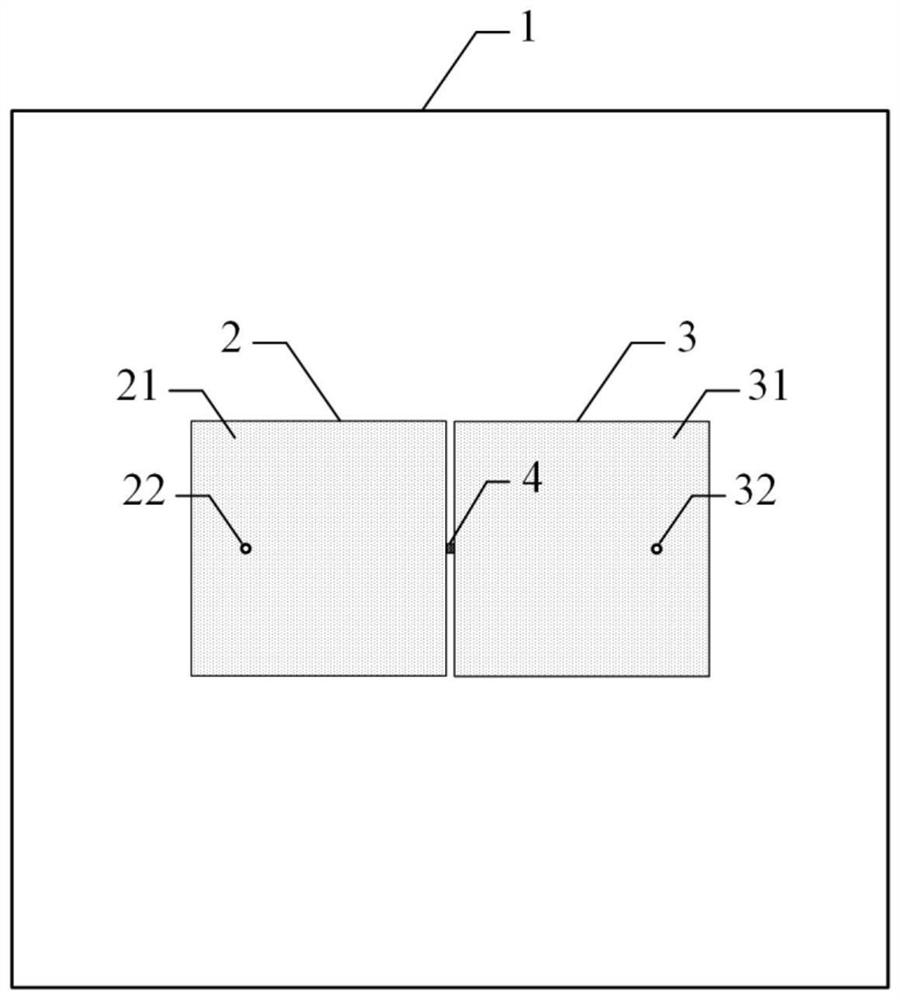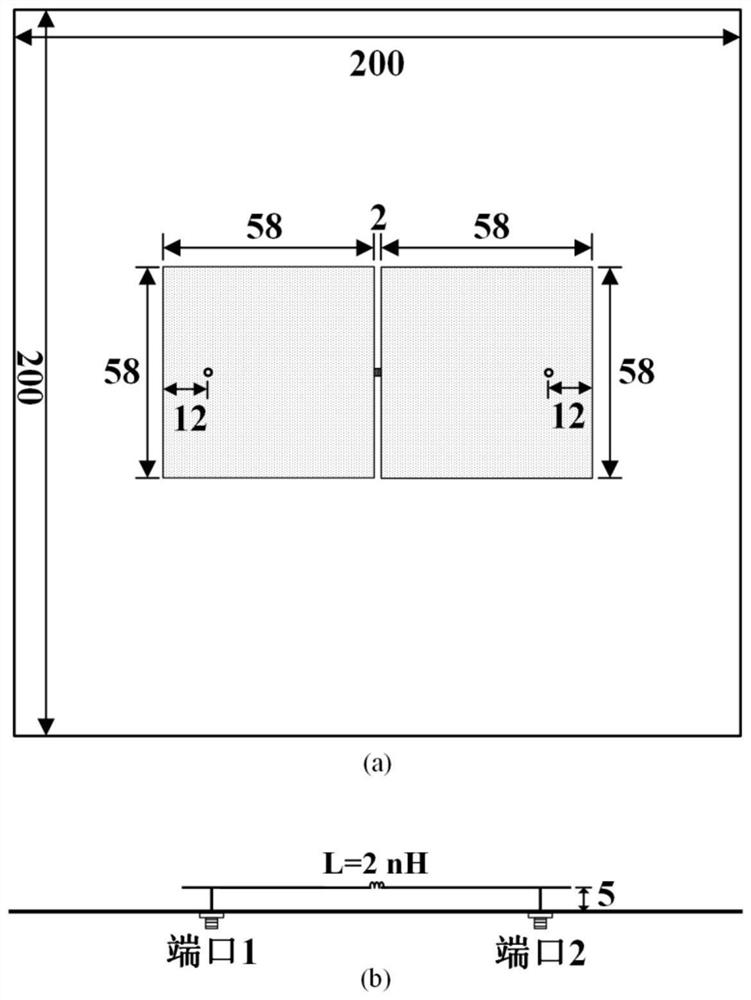A microstrip antenna array decoupling structure and method, and a microstrip antenna array using the structure
A microstrip antenna and array technology, applied in the field of microstrip antenna array and microstrip antenna array decoupling structure, can solve the problems of complex structure, large size, unit gain decline, etc., and achieve excellent unit radiation performance and good radiation pattern. , the effect of high unit gain
- Summary
- Abstract
- Description
- Claims
- Application Information
AI Technical Summary
Problems solved by technology
Method used
Image
Examples
Embodiment 1
[0031] refer to figure 1 with figure 2 , the microstrip antenna array decoupling structure of the present invention, wherein the microstrip antenna array includes a metal floor 1 and two microstrip antenna units arranged above the metal floor 1, that is, the first microstrip antenna unit 2 and the second microstrip antenna unit 3. There is a distance between the two. The decoupling mainly depends on the decoupling component 4 connecting the first microstrip antenna unit 2 and the second microstrip antenna unit 3. In this embodiment, the decoupling component 4 uses a lumped inductance .
[0032] The structure, size and material of the first microstrip antenna unit 2 and the second microstrip antenna unit 3 are exactly the same, and the first microstrip antenna unit 2 includes a first metal patch 21, a first feed point 22 and a first feed The probe 23 , the second microstrip antenna unit 3 includes a second metal patch 31 , a second feeding point 32 and a second feeding probe...
Embodiment 2
[0039] Such as Image 6 It is the structural representation of embodiment 2. Compared with Embodiment 1, the arrangement of the units in Embodiment 2 has changed, and the specific differences are: the position of the first feed point 22 is close to the right side of the first metal patch 21; the position of the second feed point 32 The position is close to the left side of the second metal patch 31 . In this arrangement, decoupling can still be achieved by connecting a decoupling inductor.
Embodiment 3
[0041] Such as Figure 7 It is the structural representation of embodiment 3. Compared with Embodiment 1, the unit arrangement form of Embodiment 3 has changed, and the specific difference is that: the first microstrip antenna unit 2 and the second microstrip antenna unit 3 are changed from the center-symmetrical arrangement in Embodiment 1 to The arrangement is symmetrical in translation, that is, the first feed point 22 and the second feed point 32 are respectively close to the left side (or right side) of the first metal patch 31 and the second metal patch 32 . In this arrangement, decoupling can still be achieved by connecting a decoupling inductor.
PUM
 Login to View More
Login to View More Abstract
Description
Claims
Application Information
 Login to View More
Login to View More - R&D
- Intellectual Property
- Life Sciences
- Materials
- Tech Scout
- Unparalleled Data Quality
- Higher Quality Content
- 60% Fewer Hallucinations
Browse by: Latest US Patents, China's latest patents, Technical Efficacy Thesaurus, Application Domain, Technology Topic, Popular Technical Reports.
© 2025 PatSnap. All rights reserved.Legal|Privacy policy|Modern Slavery Act Transparency Statement|Sitemap|About US| Contact US: help@patsnap.com



